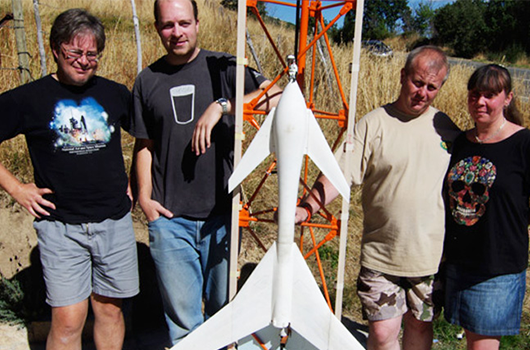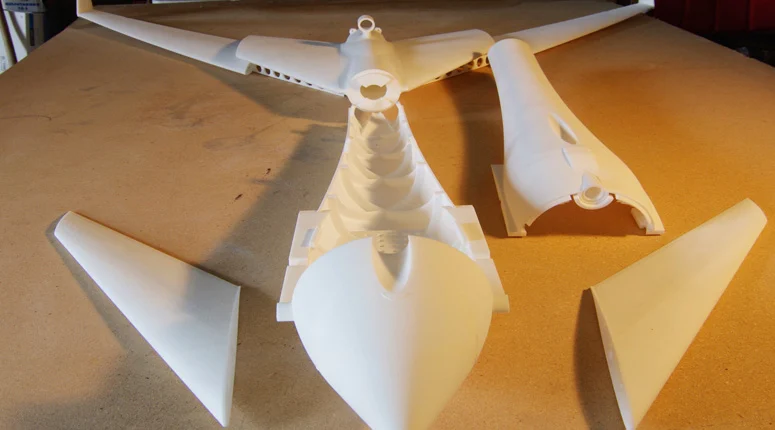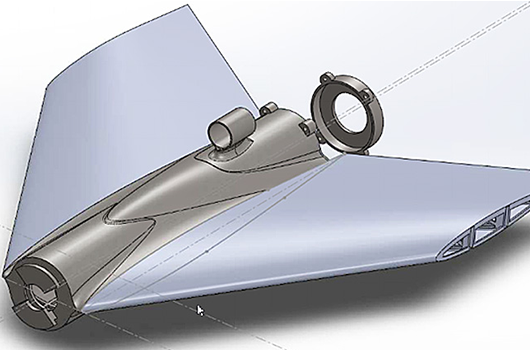Madcap Project – LOHAN
LOHAN is a madcap project involving using a high-altitude balloon to launch a glider to the edge of space then have it released from the balloon and navigate itself down to a designated landing spot.
The team needed a way to communicate if/when the LOHAN travelled out of GPRS coverage. Additionally the authorities required an emergency balloon cut-down in the event that LOHAN wandered off course.
Enter the RockBLOCK. As well as transmitting GPS data when the unit was out of range of standard mobile networks, the RockBLOCK was also used to receive commands from the ground. If they wished to abort the mission, a message sent to the RockBLOCK using our API, would be received on-board the spacecraft and activate the self-destruct mechanism.


LOHAN Components
- RockBLOCK naked unit
- Arduino Mini Pro 3.3V 8MHz
- 5V regulator
- AAA battery holder
- Four Energizer lithium AAAs
- MOSFET to fire the release
- Cable with JST connector to connect to cut-down
- The LOHAN Spacecraft
The Challenge
The team plan to launch a rocket-powered Vulture 2 spaceplane from under a helium balloon and ask it to guide itself back to terra firma using an onboard autopilot system. This is commonly known as a ‘rockoon’ concept, or ‘ballocket’, and it presents a few serious technical challenges – not least how to launch the aircraft. As meteorological balloons can get really, really big at altitude, any launch plan needs to balance offering the vehicle the chance to get to maximum altitude while avoiding an enormous latex sphere.
Several had the idea of using multiple balloons, but the team ruled against this, the logic being, it multiplies the diameter problem and doesn’t really offer an advantage in terms of maximum attainable altitude. Afterall, all balloons would burst at around the same height, and it’s likely the first explosion would trigger multiple bangs.
Instead the team’s research brought them back to the 1980s – John Guest was involved in a rockoon project aiming to put a 1-gram payload into orbit. Unfortunately, as a result of the estimated $50K cost, this project came to nothing, evidently though some real thought was given to the matter. Guest wrote: “Launch before balloon burst. Much better platform stability. Once burst occurs, you don’t know what your craft attitude is going to be. You won’t make orbit (and I don’t think you want to, really). However, a launch attitude of 45 degrees would both maximize downrange distance and altitude.”
This echoed the team’s experiences with rockoons launched vertically which have sacrificed the balloon; disregarded due to the potential damage to the aircraft. Instead the team plan on trying the suggested spaceplane launch angle of 45 degrees.

The Initial Spec
Based on the Paper Aircraft Released Into Space (PARIS) concept of having the aircraft attached to a main payload box:
- Single helium balloon, lift capability 1,000 feet per minute.
- Main payload box with onboard video and stills cameras.
- Main payload to contain both a) launch trigger electronics and b) Vulture 2 onboard systems enabling electronics.
- Launch of Vulture 2 programmed for before balloon burst.
- Main payload to descend by rocket recovery parachute.
- Main payload recovery systems to include GPS radio beacon
In summary, the main payload electronics will enable the Vulture 2 onboard cameras and autopilot, and then fire the rocket motor at a predetermined altitude. The aircraft will fly at an angle of 45° from some form of launch platform, the design of which should run in tandem with the Vulture 2 development.
We wish the team all the best with launch and future projects!
Built with Ground Control
If you'd like to get in touch with the team either to discuss a challenge similar to that of the one above, or something completely different our team of experts will be happy to provide objective advice.
